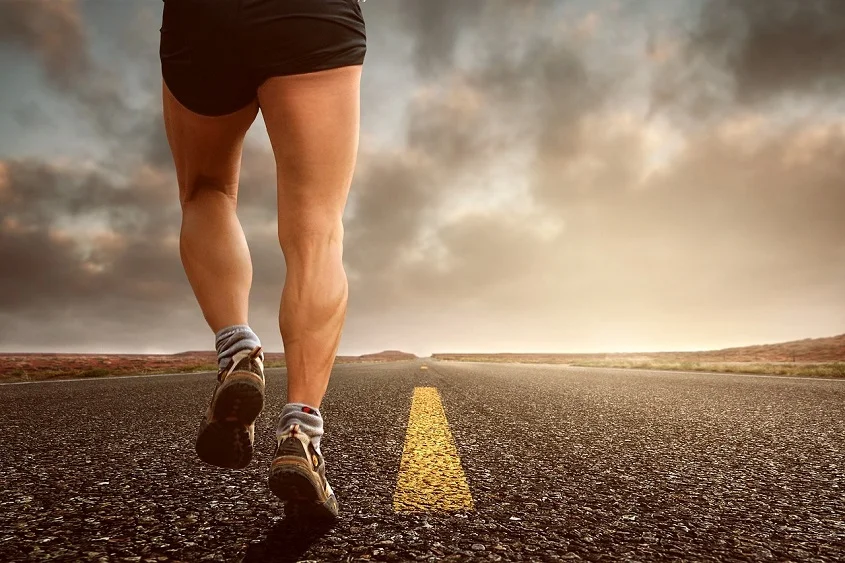Taking Steps Towards Healthy Legs: Exploring the World of Veins
- Updated on: Jan 6, 2025
- 4 min Read
- Published on Jan 6, 2024

Our legs play a crucial role in our well-being. However, we often neglect the health of our veins, underestimating their importance in maintaining optimal circulatory function. In this article, we delve into the intricate world of veins. We will explore ways to ensure their health for a more active and comfortable life.
Understanding Vein Health
Our circulatory system is a marvel. Veins play a vital role in ensuring the smooth flow of blood throughout our bodies. Let’s delve deeper into the mechanisms of veins.
How Veins Function
Veins transport oxygen-depleted blood back to the heart to receive fresh oxygen. This process involves a series of valves within the veins that prevent backward blood flow. The rhythmic contraction and relaxation of surrounding muscles, especially during movement, propels blood upward.
Signs of Poor Vein Health
Maintaining optimal vein health is essential for well-being. Understanding the signs of poor vein health is the first step toward proactive care. Let’s delve deeper into the nuances of these signs.
Visible Veins and Discoloration
While visible veins are a common sign, it’s crucial to differentiate between varicose veins. Varicose veins, characterized by larger, twisted veins, are more than a cosmetic concern. They can cause discomfort and are associated with skin discoloration around the affected area. While they can develop in any body part, they commonly appear in the legs and feet.
Addressing varicose veins involves a comprehensive approach, and a varicose veins specialist plays a crucial role in this journey. This specialist can diagnose and treat vein-related issues.
Risk factors for varicose veins include:
– Genetics
– Age
– Gender (women are more prone)
– Lifestyle factors, like prolonged standing or sitting
They may start as a cosmetic concern. However, untreated varicose veins can lead to complications like skin ulcers or blood clots.
Swelling and Discomfort
Swelling, often accompanied by discomfort, is a common early sign of poor vein health. Beyond the visible swelling, people may experience throbbing or aching in their legs. The discomfort can be exacerbated by prolonged periods of inactivity. This emphasizes the importance of paying attention to how your legs feel after various activities.
Sometimes, people might overlook mild discomfort or attribute it to fatigue. However, persistent or worsening symptoms should not be ignored. They may indicate an underlying issue with vein function.
Leg Fatigue and Restlessness
Beyond direct discomfort, poor vein health can manifest as leg fatigue and restlessness. People may experience a compelling urge to move their legs, especially when trying to rest or sleep. This restlessness, known as restless legs syndrome (RLS), can be linked to circulatory issues.
Slow-Healing Wounds
Impaired circulation due to vein issues can affect the body’s ability to heal effectively. People may notice that wounds or sores on their legs take longer to heal than usual. This delayed healing is a red flag for potential circulatory problems.
Changes in Skin Texture
Examining the skin texture on your legs can provide insights into vein health. Some skin changes that may be indicative of poor circulation are:
– Dryness
– The development of a leathery texture
Vein-related skin changes can occur due to insufficient nutrients and oxygen supply.
Impact on Daily Life
Poor vein health can extend beyond physical symptoms, affecting your quality of life. Persistent discomfort may limit your ability to engage in physical activities, impacting your daily routine. Moreover, the visible appearance of varicose veins can have psychological effects. This leads to self-consciousness and a reluctance to expose your legs.
Understanding these signs allows you to seek timely medical advice. Some lifestyle adjustments can alleviate mild symptoms. However, professional guidance becomes crucial in addressing more severe vein issues.
Preventive Measures for Healthy Legs
Proactive care plays a crucial role in maintaining optimal vein health. Let’s explore the preventive measures individuals can incorporate into their daily lives.
Annual Check-ups with a Vein Specialist
Preventive care also involves proactive health monitoring. Scheduling annual check-ups with a vein specialist allows for the early detection of potential issues. Professionals can evaluate vein health and provide personalized recommendations.
Regular Exercise
Regular exercise stands as a cornerstone in the pursuit of healthy legs. Incorporating leg-specific exercises can target muscle groups that support vein function. Some great exercises are:
– Ankle circles
– Leg lifts
– Calf raises
The goal is to promote circulation and prevent blood pooling in the lower extremities.
Healthy Diet and Hydration
Nutrition plays a pivotal role in maintaining circulatory health. A healthy diet ensures your body receives the essential nutrients that support vein elasticity and strength. Incorporate in your meals foods rich in:
– Fruits
– Vegetables
– Whole grains
Adequate hydration is equally crucial. It helps maintain blood volume, promoting smoother circulation.
Avoiding Prolonged Sitting or Standing
Modern lifestyles involve extended periods of sitting, which can adversely impact vein health. Take regular breaks to stand, move around, and stretch. Simple actions can prevent blood stagnation, like the following:
– Flexing your ankles
– Wiggling your toes
– Performing seated leg lifts
The goal is maintaining a balance that prevents excessive strain on veins and encourages healthy circulation.
Choosing the Right Footwear
Footwear plays a significant role in vein health. Wearing shoes with a comfortable fit and proper arch support can enhance circulation by promoting proper alignment. Also, avoid high heels for extended periods. Opt for shoes with lower heels or flats to reduce leg strain.
Regular Leg Elevation
Raising your legs is a simple and effective preventive measure. When lying down, placing a pillow under your legs helps facilitate blood flow back to the heart. Consistent leg elevation can:
– Alleviate swelling
– Reduce discomfort
– Contribute to vein health
Elevating your legs as a part of your daily routine, especially before bedtime, can yield lasting benefits.
Conclusion
Taking steps toward healthy legs involves a holistic approach. You can enjoy a more comfortable lifestyle by understanding vein health and adopting preventive measures. Regular check-ups and informed choices are key to ensuring optimal vein health in the long run.












